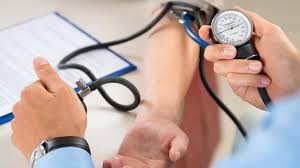Source: hindustantimes.com
India aims to treat at least 150 million people with high blood pressure (BP) across 100 districts in all the states over the next few years.
The Indian Council of Medical Research (ICMR), along with World Health Organization (WHO), has launched the India Hypertension Control Initiative (IHCI) in 25 districts across five states, which will be expanded to 100 districts by 2025.
“The national action plan targets reducing the number of people with uncontrolled hypertension by 25% by the year 2025. The IHCI is a model initiative towards that as prevention and treatment is far safer and less expensive than bypass surgery and regular dialysis,” ICMR director-general Dr Balram Bhargava said.
“It will strengthen the cardiovascular component of the National Programme for Prevention and Control of Cancer, Diabetes, Cardiovascular Diseases and Stroke,” Dr Bhargava said.
Under the IHCI, every person above 30 years of age will be screened for high blood pressure in a primary health centre or sub-centre and also health and wellness centres.
Uncontrolled hypertension or high blood pressure is a leading risk factor for heart attack, stroke and kidney failure. According to government data, 200 million adults have high blood pressure, and 50% of them do not know about it.
“India has a huge disease burden wherein one in four suffers from hypertension. What’s worse, however, is that only one in 10 of those has blood pressure under control. It puts a large number of people under the risk of sudden heart attacks and strokes,” Dr Meenakshi Sharma, ICMR scientist who is involved with the project, said.
Telangana, Punjab, Madhya Pradesh, Maharashtra and Kerala are already screening people under the programme and have registered about 300,000 hypertensive people in the last one year.
As part of the project, health workers at primary health centres and subcentres have been extensively trained in screening people above 30 years using professional digital monitors.
People with blood pressure readings of 140/90mmHg or above are being put on blood pressure medicines on the basis of a standard treatment protocol that the states have designed with the help of experts from ICMR and WHO. The expansion plan targets at least two districts in each state.
“Putting almost 180 million people on treatment is a huge task. There will be challenges like stopping patients from dropping out of the programme etc., so the staff has also been trained to counsel patients,” Dr Prabhdeep Kaur, head of non-communicable diseases division at National Institute of Epidemiology, said.
